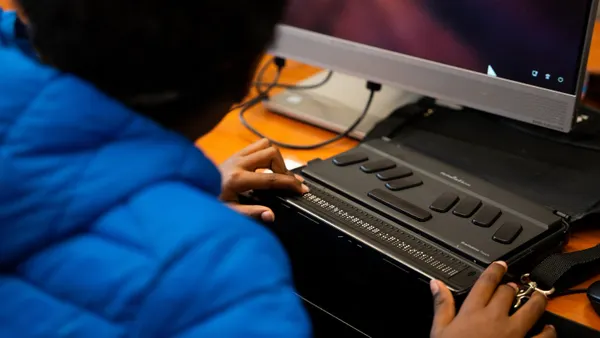In the rush to reduce dropout rates and boost graduation rates, the focus has fallen primarily on keeping kids in school or getting them back in quickly if they leave. But a new movement to expand the vision for dropout recovery has been gaining steam in recent years, as revisions to the traditional GED have pushed it farther out of reach and companies increasingly look to fill jobs that require technical skills most colleges don’t prepare students for.
Up until a certain point, a young person who has left the education system can return. If a child of 14, 15, 16, or older wants to go back after dropping out, they can attend an alternative high school, they can engage in credit recovery programs through their high school, they can take some courses in person at a separate school facility and do some online, or do all of their remaining coursework virtually.
But for adults looking to return, it can be more complicated. The age cutoff varies from state to state, but by the time a young person is in their 20s, getting a high school diploma can be hard no matter how motivated they may be.
“Typically, when an individual passes the high school funding age, the opportunity to get a HS diploma leaves with them,” said Rebekah Richards, the chief academic officer and co-founder of the Graduation Alliance. There’s some sense that’s beginning to change, though. “One of the things that I’ve seen is that when we first started doing dropout recovery, we could meet our target for graduation rates as a country by doing dropout prevention. Dropout recovery has become a mainstream model in just the past few years.”
Most programs are focused on either dropout prevention or recovery of younger students, thanks in part to funding structures. States offer funds for dropout recovery programs up until the cutoff, though in its 2014 rewrite of the Workforce Innovation and Opportunity Act, which replaced the Workforce Investment Act, Congress expanded the focus from high school-aged individuals to people up to age 24. After that, federal funds taper off, too.
The GED system has also seen changes and is now aligned to Common Core standards. As a result, the always-challenging test has been made even more so — especially for students who never received the standards-aligned instruction needed to pass. According to the Hechinger Report, preparation for GED instructors has lagged behind students’ needs and the demands of the new test.
So the focus has shifted to other forms of adult recovery, such as Graduation Alliance’s programs or new state systems that help provide support for adults who need credits to get a high school diploma or skills to get a job. These efforts have been bolstered by the increasing availability of and reliance on online courses. Richards, who has worked with at-risk youth for over a decade, said concerns in the early 2000s focused on the freedom online schools provide — and the ease with which students can stagnate, thanks to that freedom.
“The online model then was to give students a username and password,” Richards said. “One of the things we’ve seen is that when we design strong support and strong accountability, it can balance out the challenges presented by flexibility.”
The ability to use digitally-driven approaches may reduce capital concerns related to construction or acquisition for states and districts looking to add dropout recovery programs for adults, ultimately allowing working adults or those with families to participate. And solving a longstanding problem for states and districts in the process.
Would you like to see more education news like this in your inbox on a daily basis? Subscribe to our Education Dive email newsletter! You may also want to read Education Dive's look at whether community buy-in is necessary for the success of innovative school models.












